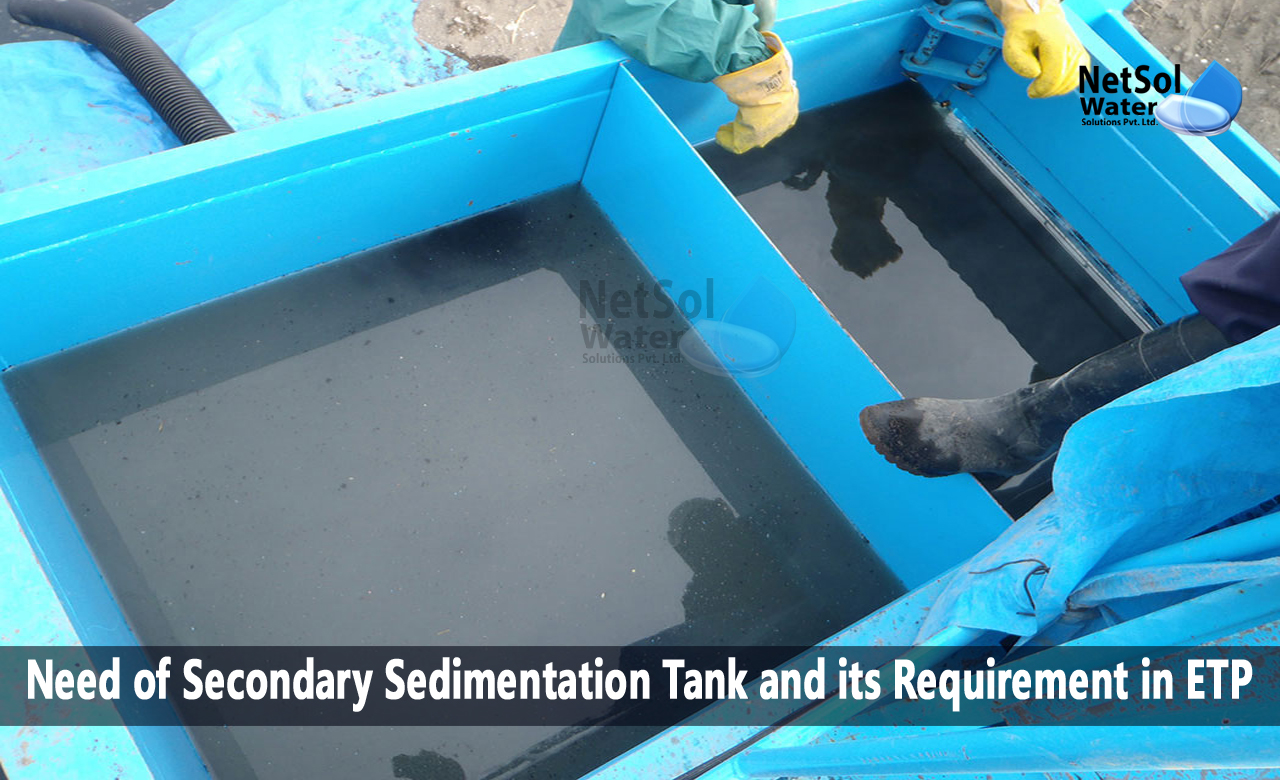Effluent treatment plants (ETPs) are designed to remove pollutants and contaminants from wastewater generated by variousindustries. Secondary sedimentation tanks are an essential component of the ETPs. They play a vital role in the treatmentprocess by removing the biological sludge that is formed during the biological treatment process.
Let us now have an understanding on why is there a need for secondary sedimentation tanks in ETPs and why are they required.
What is a Secondary Sedimentation Tank?
A secondary sedimentation tank is a large tank that is used to separate the biological sludge from the treated wastewater. It is the final stage of the biological treatment process in Effluent Treatment Plants.
During the biological treatment process, microorganisms break down the organic matter which are present in the wastewater or sewage, which creates a sludge that settles at the bottom of the tank.
The treated water from the biological treatment process is then sent to the secondary sedimentation tank, where the sludge is separated from the water.
Why is a Secondary Sedimentation Tank Needed in ETPs?
The primary function of a secondary sedimentation tank is to remove the biological sludge from the wastewater.
The sludge that settles at the bottom of the tank contains microorganisms that have consumed the organic matter in the wastewater. The sludge is rich in nutrients, and it can be reused as a fertilizer or sent to a sludge treatment facility for further processing.
The treated water from the secondary sedimentation tank is then sent to the tertiary treatment process, which involves chemical treatment to remove any remaining contaminants and pollutants from the wastewater.
Advantages of Secondary Sedimentation Tank:
There are several advantages of having a secondary sedimentation tank in ETPs, including:
1. Improved Water Quality:
The secondary sedimentation tank improves the quality of the treated water by removing the biological sludge that can cause odor and discoloration in the water.
2. Nutrient Recovery:
The sludge that is removed from the secondary sedimentation tank can be reused as a fertilizer, which reduces the need for synthetic fertilizers.
3. Reduced Maintenance:
The secondary sedimentation tank reduces the maintenance requirements of the ETP by removing the biological sludge that can clog pipes and other equipment.
4. Lower Operating Costs:
The secondary sedimentation tank lowers the operating costs of the ETP by reducing the amount of chemical treatment required to remove pollutants from the water.
Conclusion
The secondary sedimentation tank is an essential component of the Effluent Treatment Plants. It removes the biological sludge that is formed during the biological treatment process, improves water quality, recovers nutrients, reduces maintenance requirements, and lowers operating costs.
The sludge that is removed from the secondary sedimentation tank can be reused as a fertilizer or sent to a sludge treatment facility for further processing. Proper operation and maintenance of the secondary sedimentation tank are critical to ensure that the treated water meets the required quality standards and to prevent the discharge of pollutants into the environment.
Leading manufacturer of sewage treatment plants in India
Netsol Water is the leading manufacturer, supplier, and exporter of a quality selection of water treatment, and wastewater treatment products in India, by using advanced sewage treatment methods.
RO plants, water softeners, ETPs, STPs, DM plants, AMC, O&M, Ultra filtration, UV, Ozonation, ZLD plants, Anoxic tanks, and other goods and services are available from us. We also provide services to businesses in sectors including automotive, pharmaceutical, textile, pulp & paper, beverages, refineries, schools, hospitals, office buildings, and hotels, among others.
Call us at +91 9650608473 or email at enquiry@netsolwater.com for further information.



